

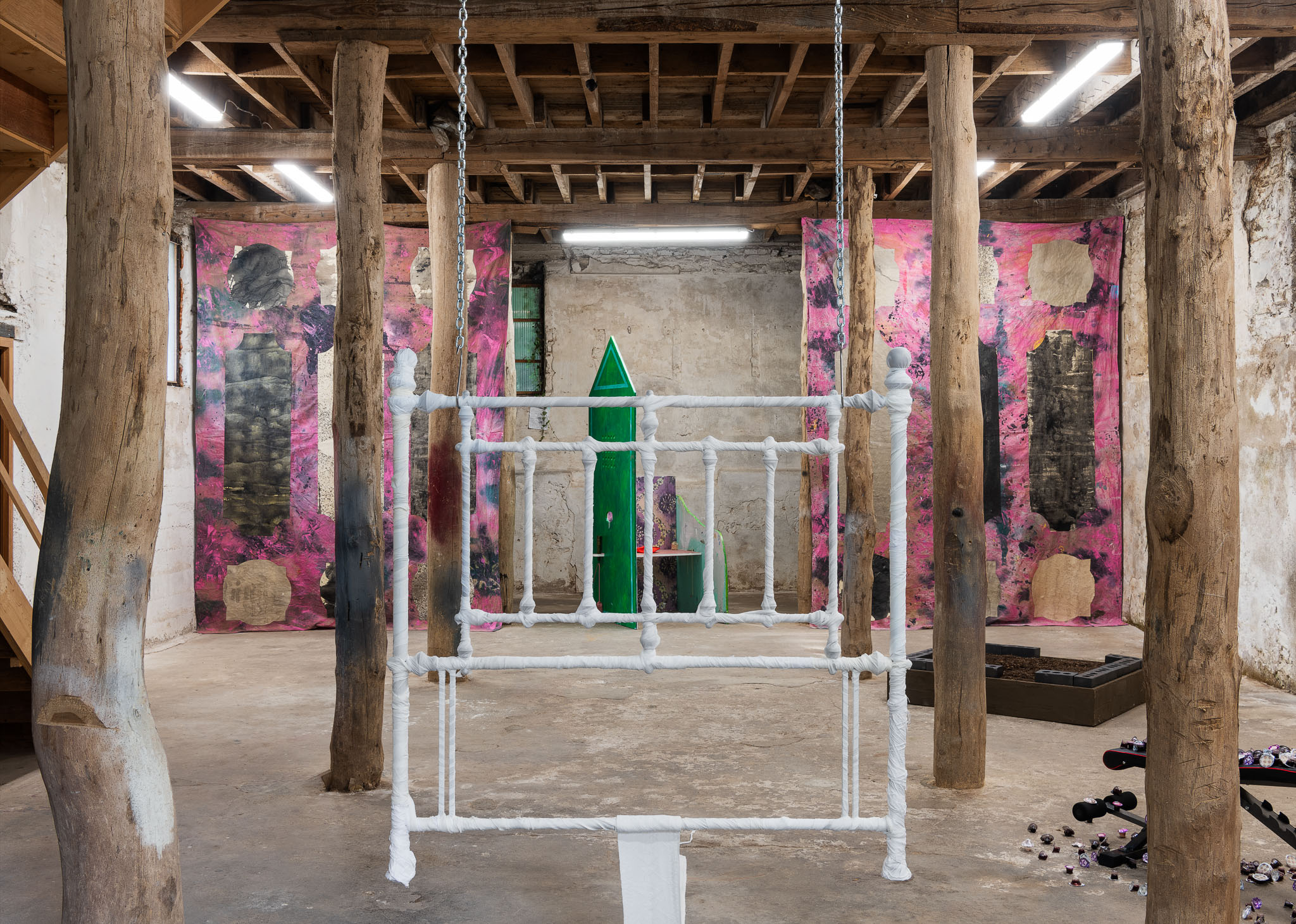






Confessions
︎ Exhibition
︎ 29 July – 3 September 2023
︎ Lismore Castle Arts – The Mill, Lismore, Ireland
Artists: Austin Hearne, David Leal & M Lissoni
Curator: Rosa Abbott
Confessions uses a queer and liberatory lens to reexamine the legacy of Catholicism and its rich visual and haptic culture, positioning the body as a locus of mourning, desire, devotion, transformation, and ecstasy. The exhibition presents the work of three early-career artists – Austin Hearne, David Leal and M Lissoni, from Ireland, Portugal and Italy respectively – all of whom have produced new work in response to the curatorial concept. Each artist has taken an expanded approach to lens-based media, incorporating photography, collage and moving image within or alongside immersive sculptural installations.
The starting point for Confessions was Susan Sontag’s 1967 essay ‘The Pornographic Imagination’, which draws a link between the visionary zeal of the ‘religious imagination’ and the ‘energy and absolutism’ of pornography. Sontag links the rise of the latter not to moral decay, but to the lack of space given in secular, capitalist society to such full-body devotional experiences and heightened states of consciousness. Fusing the spiritual with the sensual, Confessions thus seeks to create space for the ‘high-temperature visionary obsessions’ we are deprived of by contemporary existence. It appropriates the powerful imagery and rituals used by religious institutions, particularly Catholicism, but bends them to new political ends. Taking its title from the long tradition of ‘confessional’ texts, from St Augustine’s Confessions to Yukio Mishima’s Confessions of a Mask to Madonna’s Confessions on a Dancefloor, the exhibition asks if it's possible to find redemption through intimacy or articulate an erotics of transcendence.
Austin Hearne uses installation, performance, collage and photographic processes to express queer longing, devotion and obsession, calling out homophobia within the Catholic Church while appropriating the institution’s sumptuous visual culture. For Confessions, he presents a new installation incorporating a modified Confession box, wallpapered and collaged with erotic pictures of queer figures including Mishima. The work is the latest instalment in Hearne’s ongoing series narrating an obsessive and melodramatic fictional love-hate relationship between the artist and the homophobic American cardinal Raymond Leo Burke (or ‘Raymo’). Having mourned the untimely death of Cardinal Raymo in his installation at the Royal Hibernian Academy, Dublin earlier this year, our protagonist now rediscovers his vitality and jouissance through sublimation and devotion to the male form.
David Leal uses object- and lens-based media to probe vision, religion and sexuality, finding fertile ground in the rich overlap between religious iconographies and queer aesthetics, including those drawn from fetishistic or S/m dynamics and practices. The artist’s Palmatórias series of photographs, digitally printed on metal, captures the contorting back and arms of a male figure as he plays the piano and enters cruciform binds. Nearby, an installation of pandemic-era plastic cups containing communion wine and wafers surround a gym bench, conjuring the metamorphosis and plurality of the body, but also heightening its absence, leaving us only with remnants: the leather of the bench evoking skin; the blood of Christ poured into jarringly disposable packaging. A new moving image work prods at AI-generated imagery of ecclesiastical figures, chastity devices, and the insufficiency of the Catholic Church’s apology to survivors of sexual abuse.
M Lissoni uses photographic and print processes, text and objects to examine the mythologies and politics of the body, including the nexus between martyrdom, relic culture, folklore and funerary traditions. In Binding That Moves Along The Road, an antique headboard is wrapped in a piece of embroidered cloth used to swaddle newborns in the artist’s family. The work posits links between Irish folklore and Southern Italian ritual, reflecting on how these become absorbed into organised religious customs. It also draws parallels between ‘binding’ as a type of folk magic curse and the chest-binding practices used in trans communities. In What Is The Preserving Shrine?, two shrines evoke either tombs or altars made from concrete and bricks of earth moulded onsite using the soil surrounding The Mill. Each shrine contains ominous fragments – a piece of shattered tombstone inscribed with the letters DIO (GOD in Italian); a fragment of binding cloth, and a photograph of the artist’s hand bearing marks of the stigmata, partially entombed under concrete.
︎ lismorecastlearts.ie

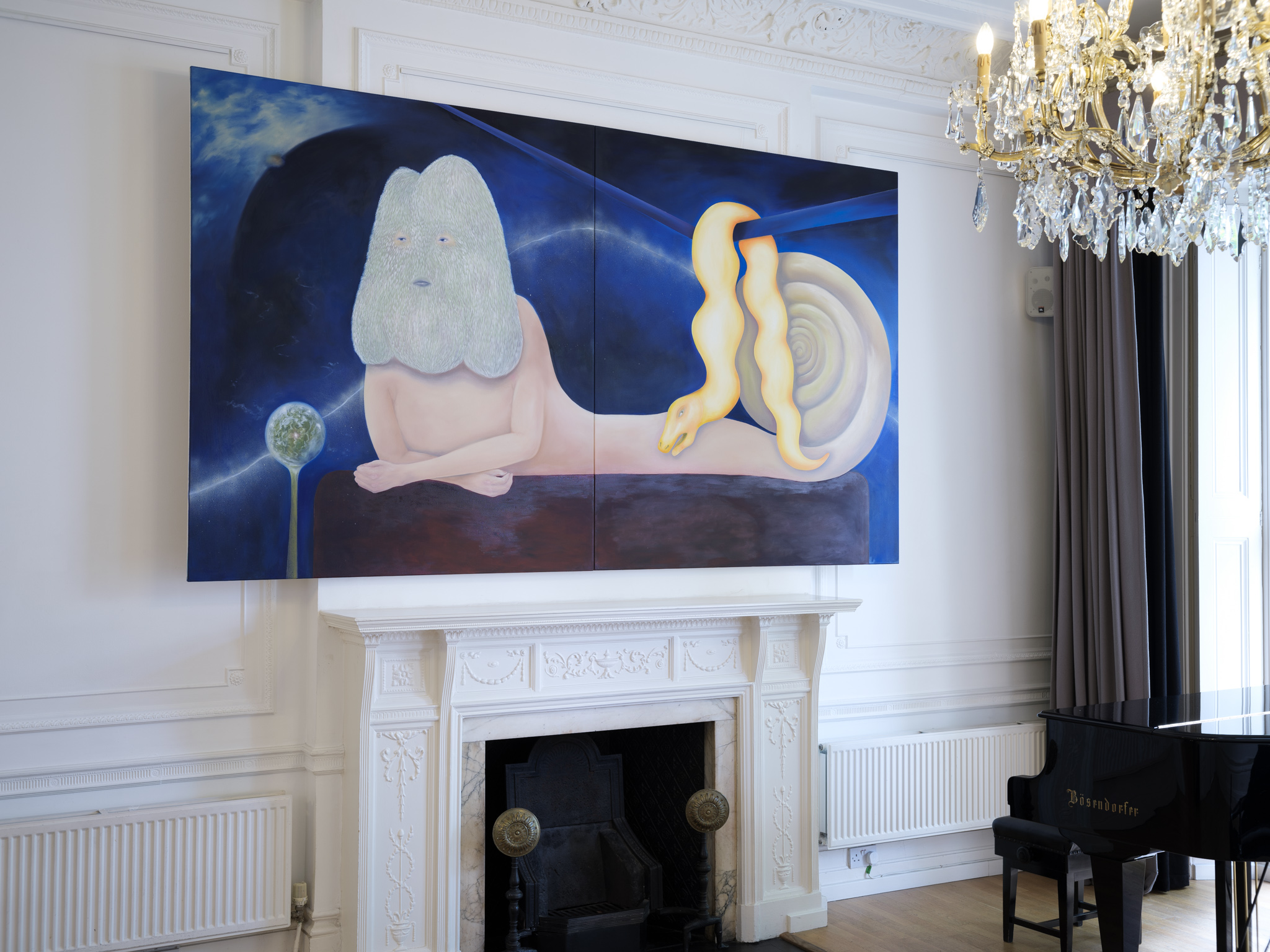

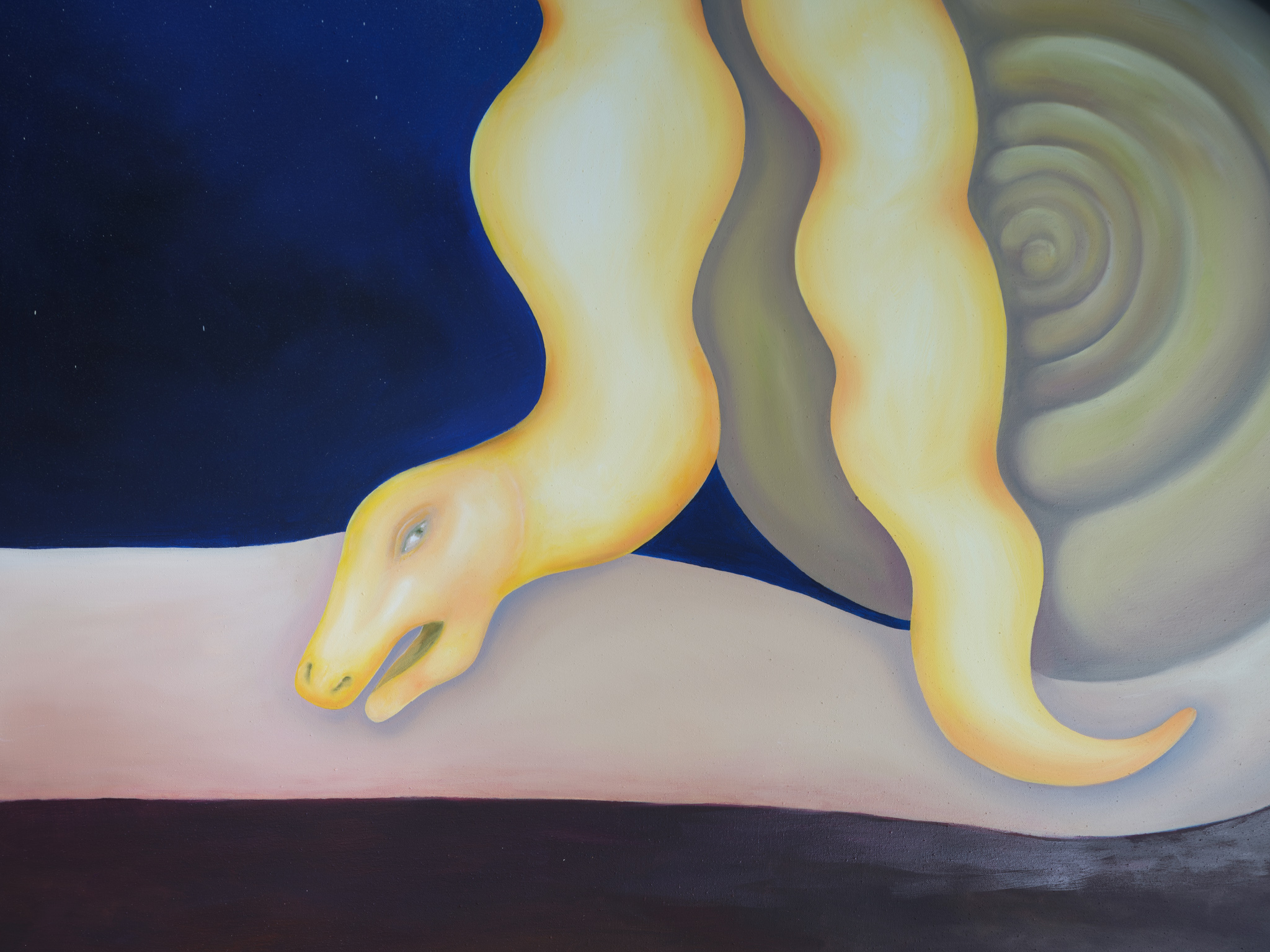
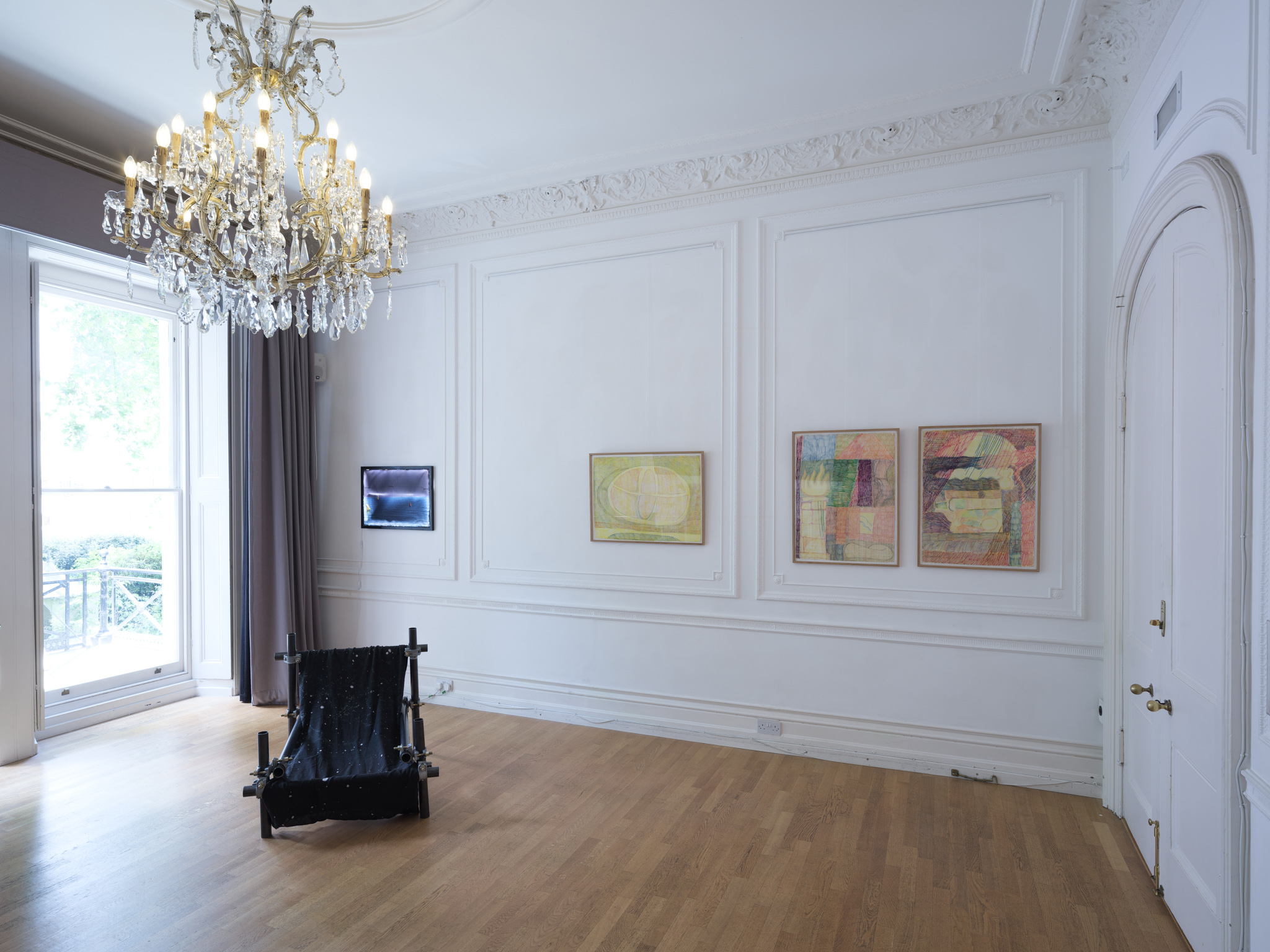


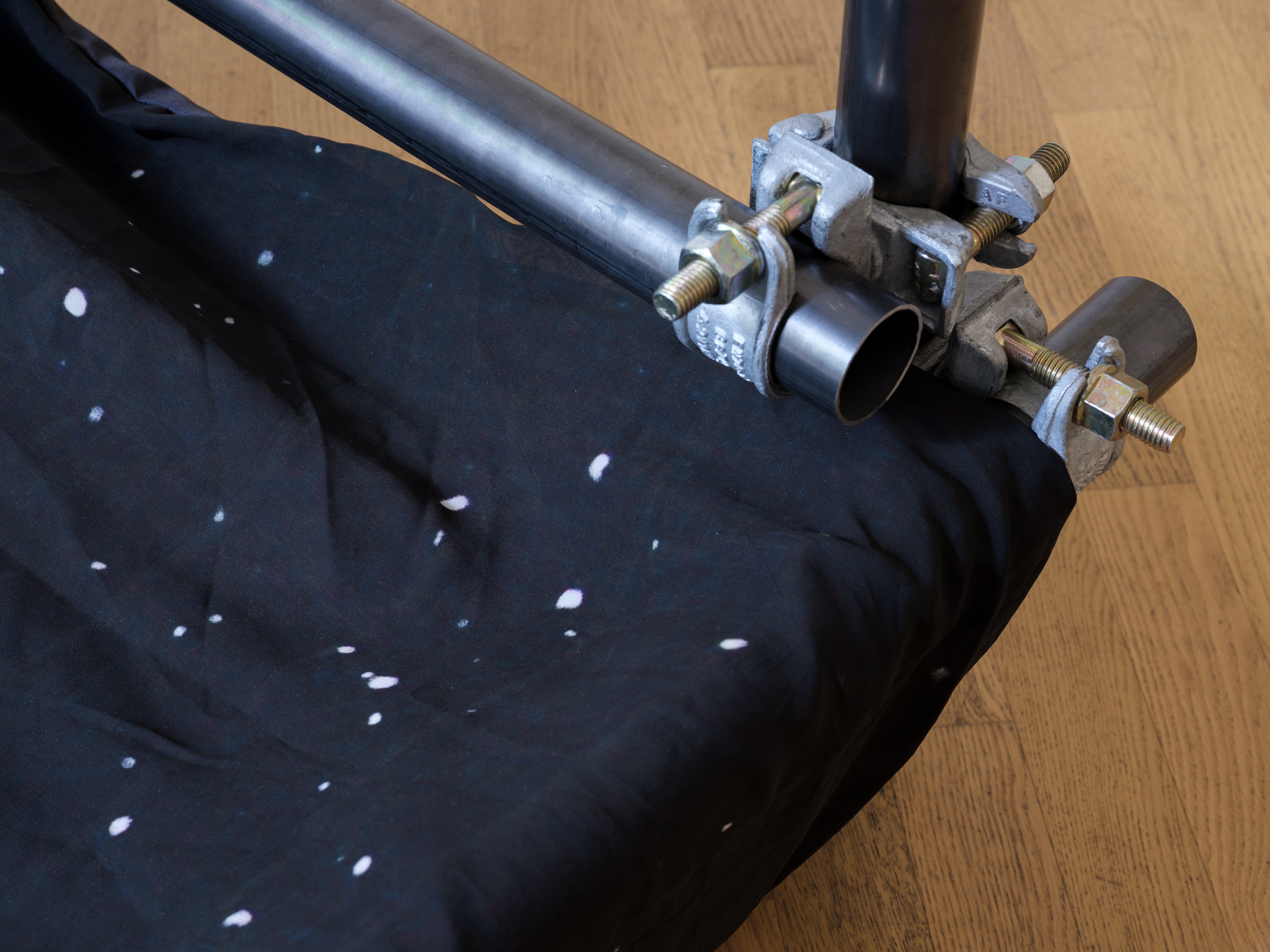

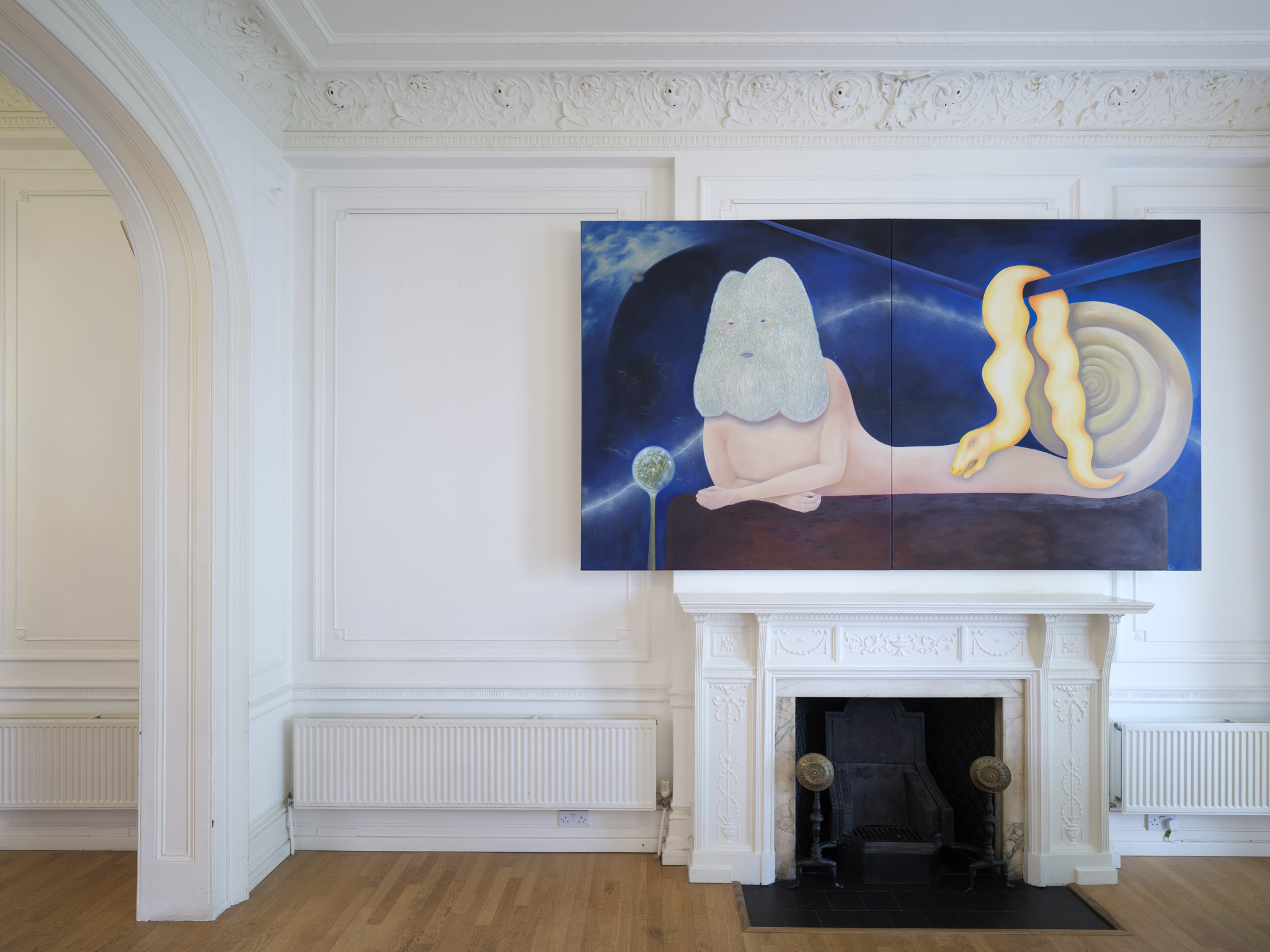
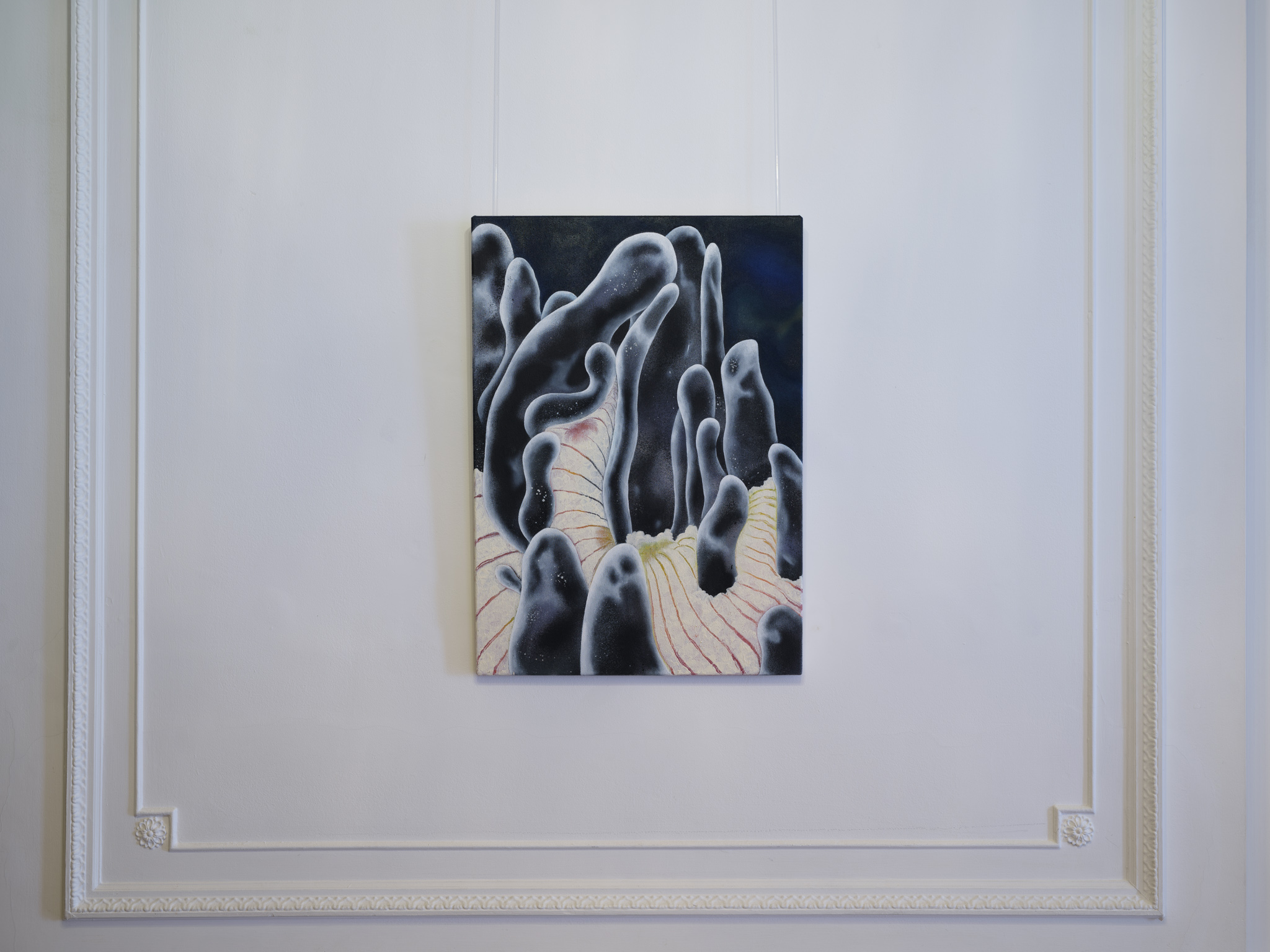
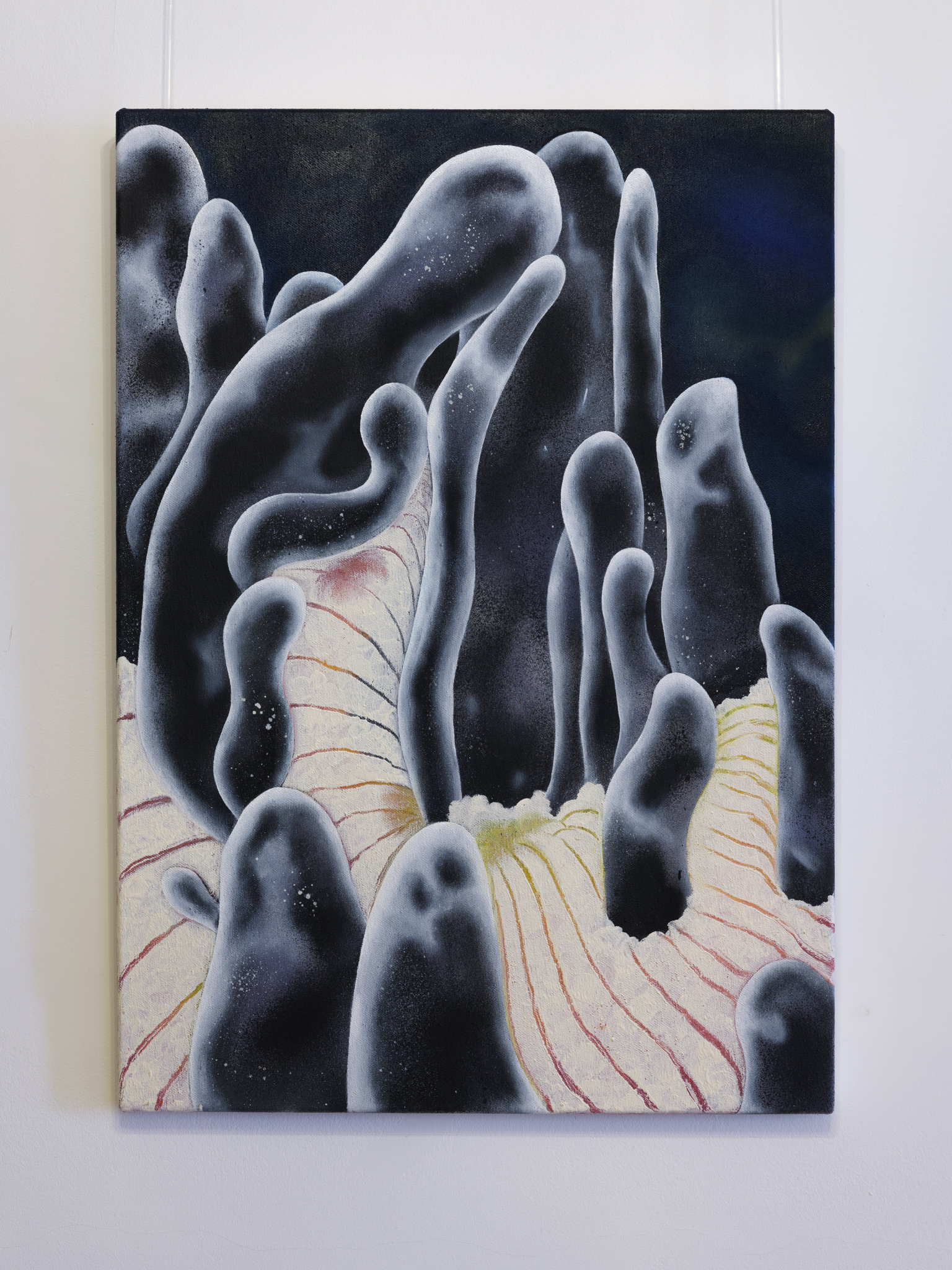








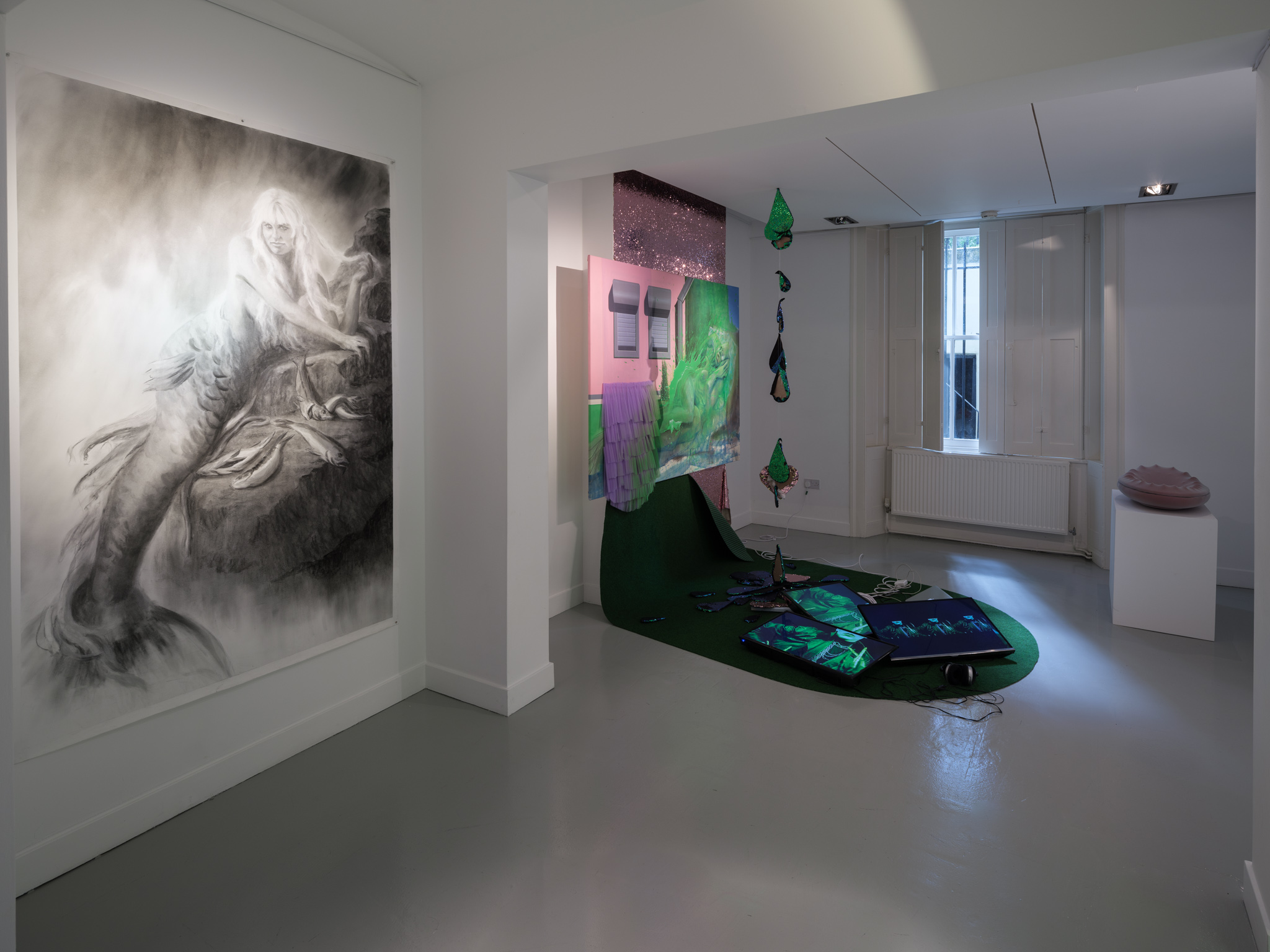


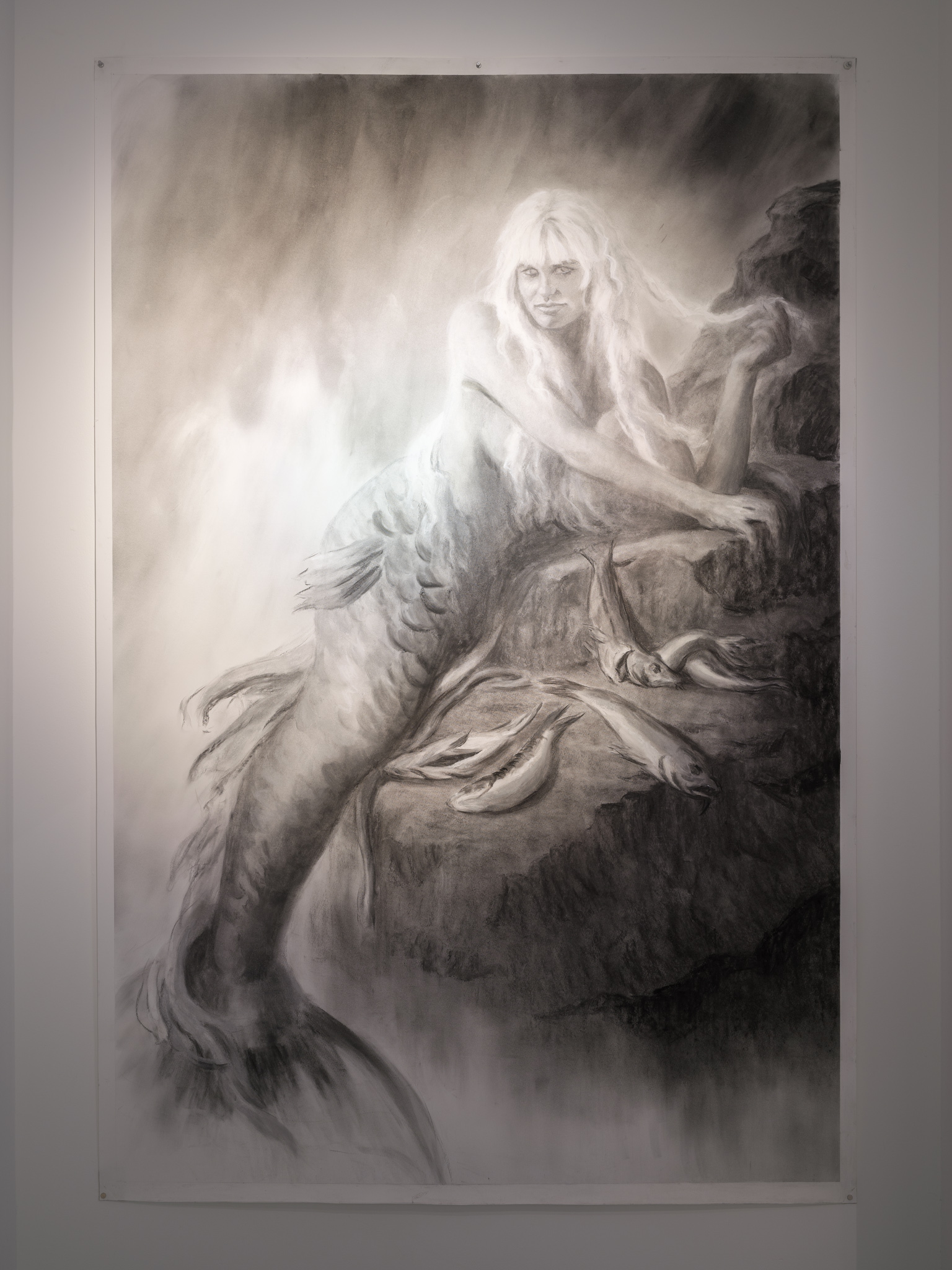
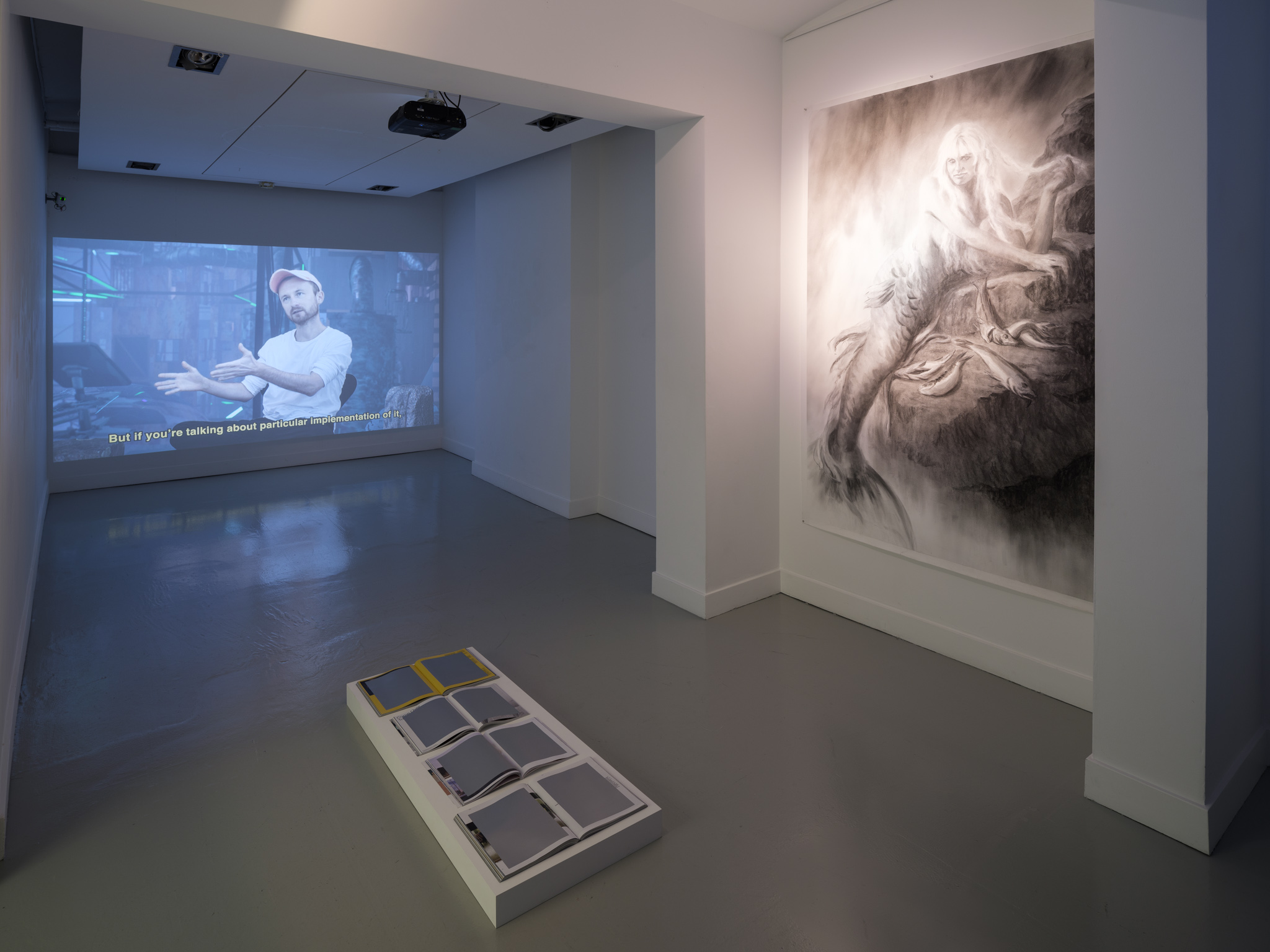

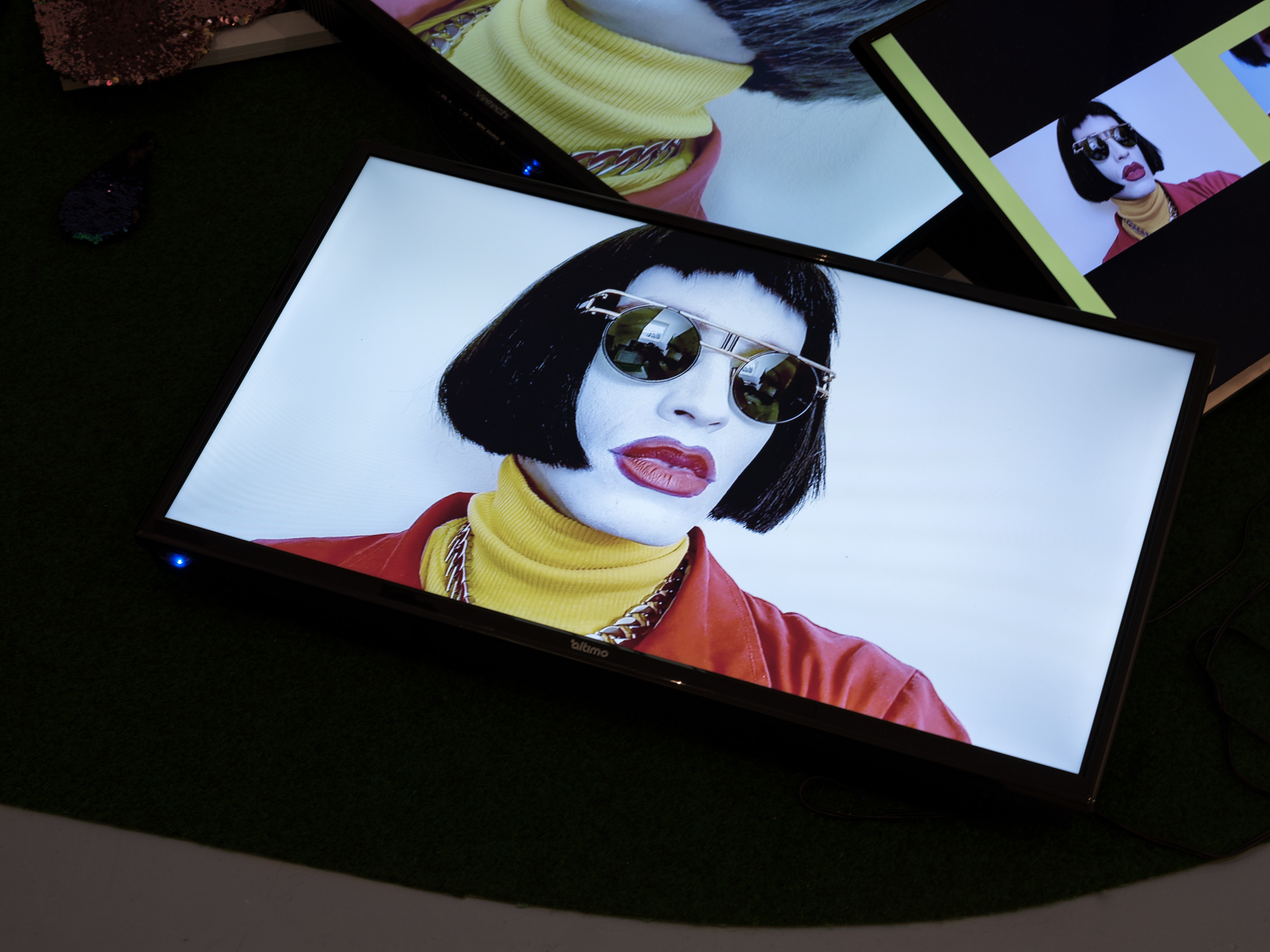
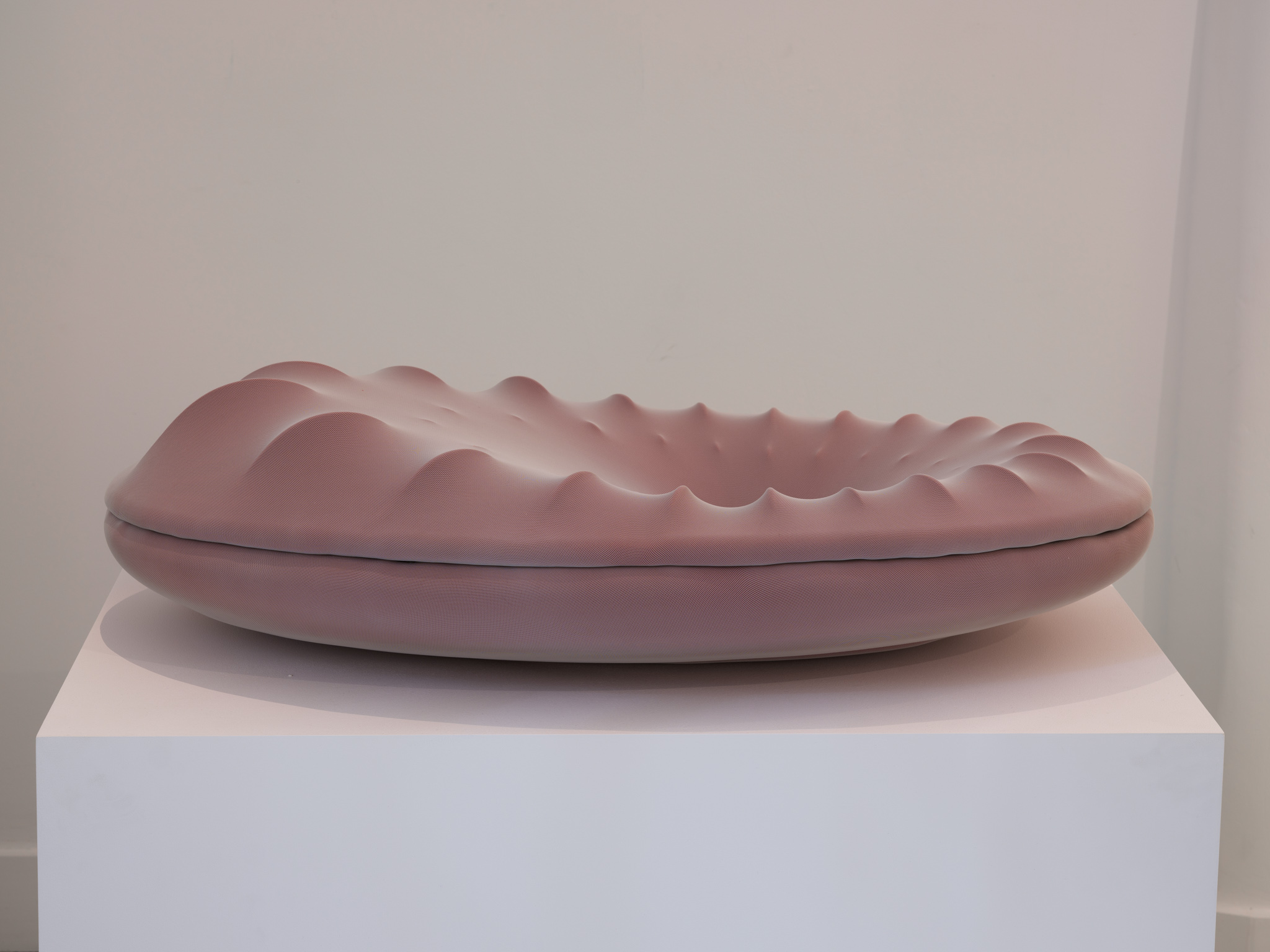
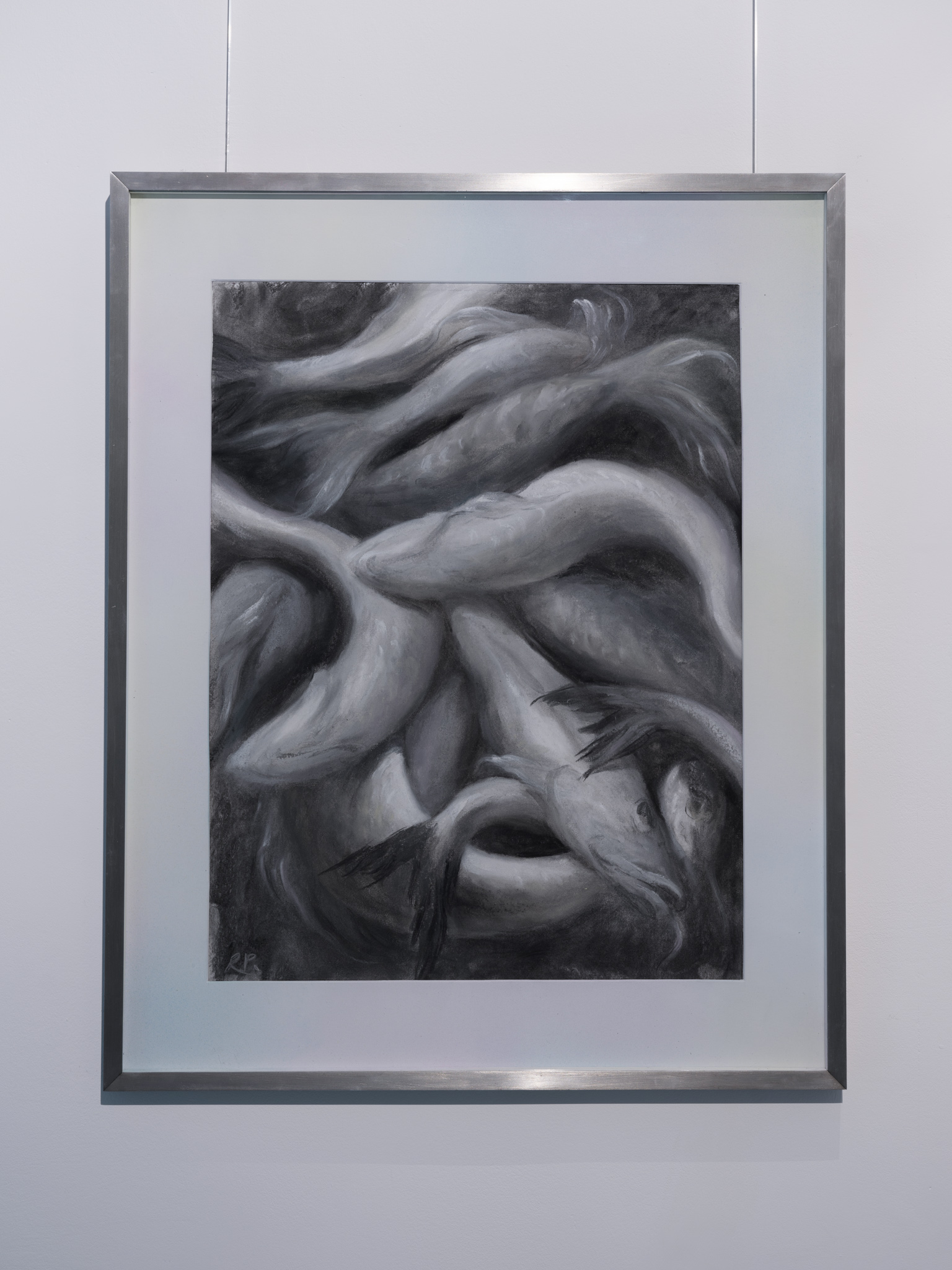
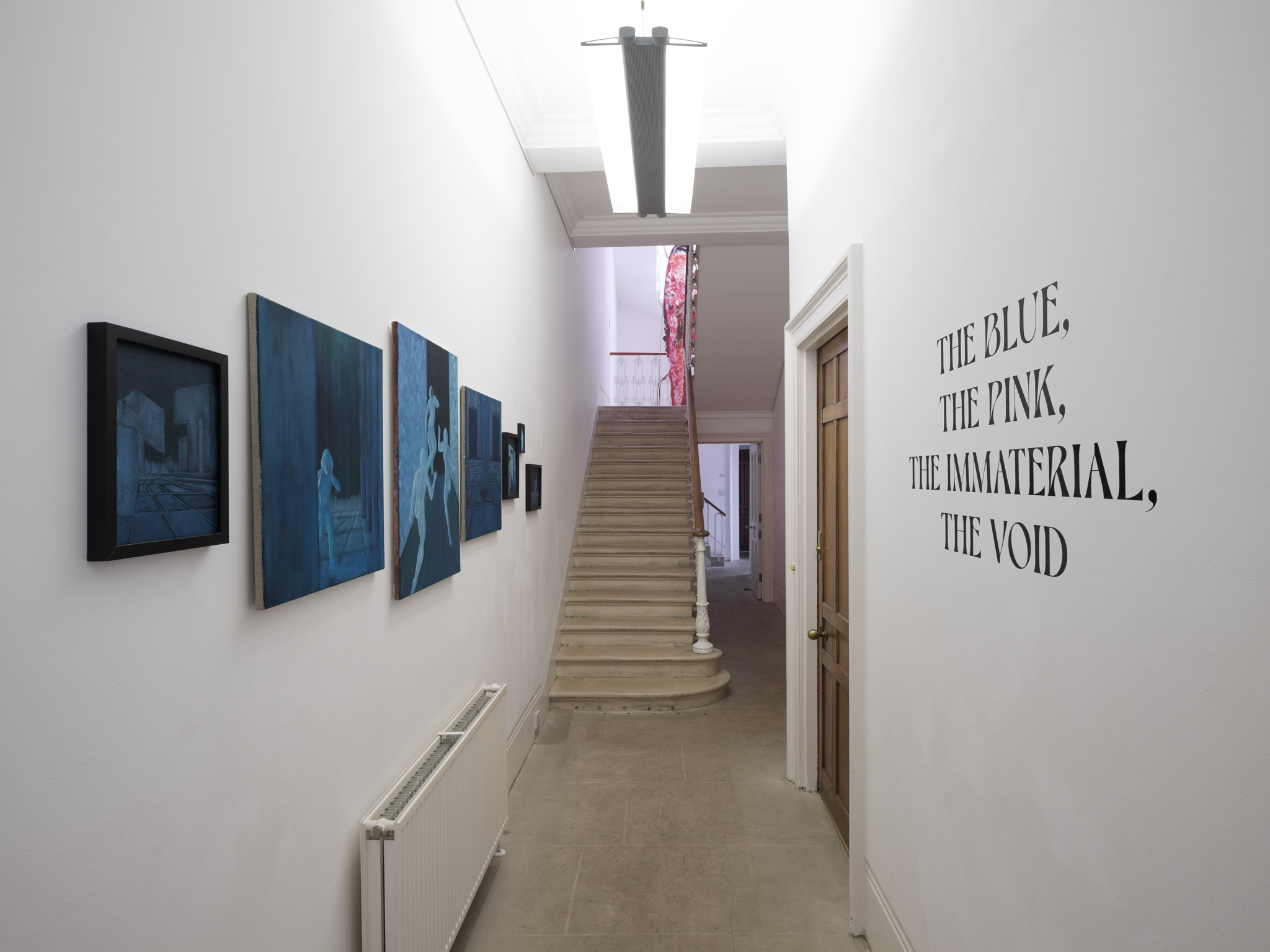
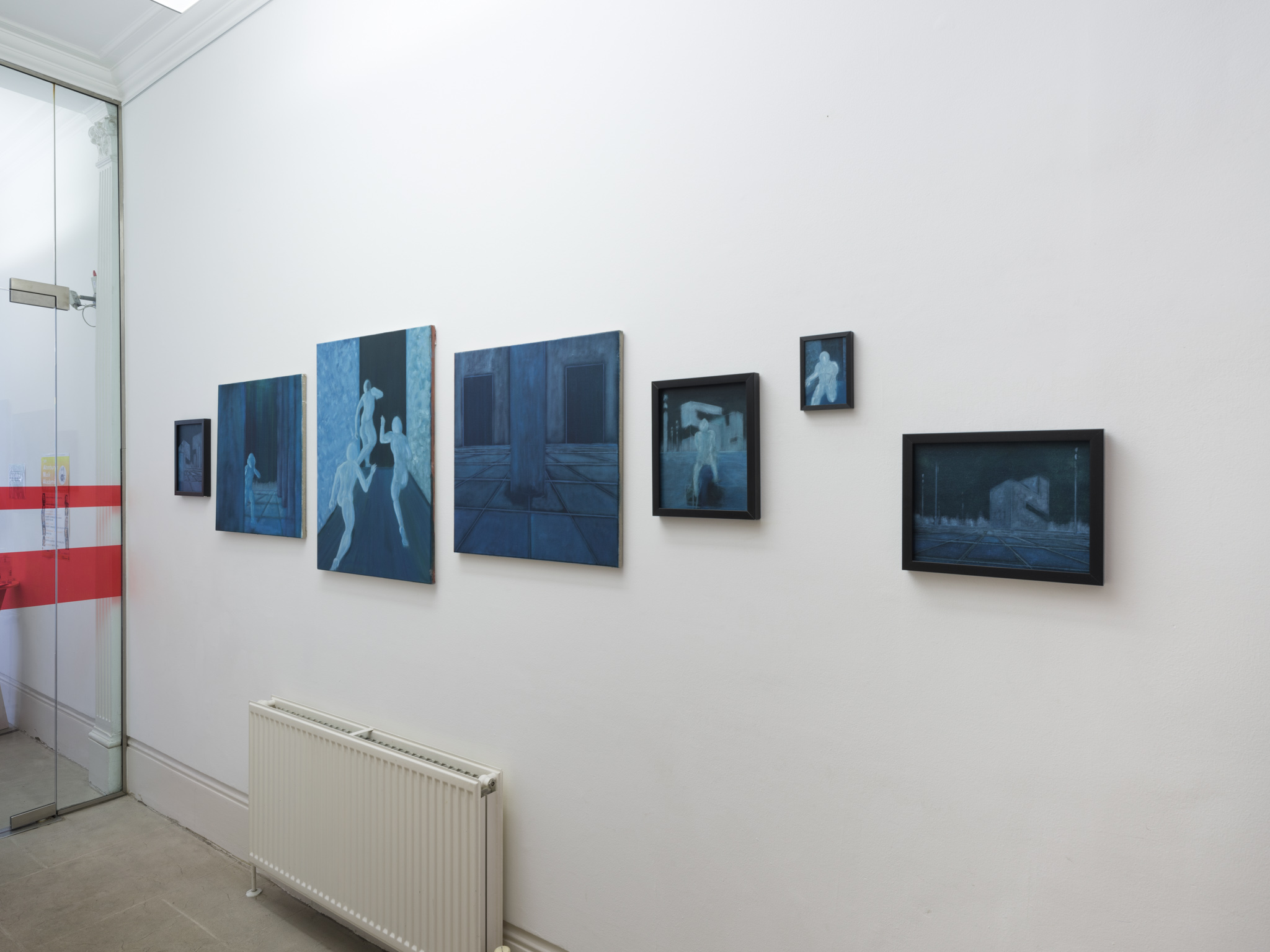
THE BLUE, THE PINK, THE IMMATERIAL, THE VOID
︎ Exhibition
︎ 20 May – 22 July 2022
︎ Austrian Cultural Forum, London
︎ bluepinkimmaterialvoid.art
Artists: Arang Choi | Pyo E | Aitor Gonzalez | Natalia Gurova & Nora Aaron Scherer | Kubakub | Laila Majid | Jérôme David Meinlschmidt | Tamu Nkiwane | Rebecca Parkin | JJ Ramsauer | Alfred Rottensteiner | Esther Vörösmarty | Grace Woodcock
Curators: Rosa Abbott & Krishna Balakrishnan
Using a framework of the Technological Sublime to reflect upon the experienced present, THE BLUE, THE PINK, THE IMMATERIAL, THE VOID presents the work of 14 early-career artists based in London and Vienna. Spanning performance, painting, sculpture, drawing, sound and digital media, the exhibition explores how varying forms of sublime can manifest through artworks as technological phenomena and experience.
‘Technological sublime’ has been theorised since the early 20th Century when artists began turning their attention to the industrial machinery of the Modernist age. As Fredric Jameson has pointed out, however, ‘the technology of our own moment no longer possesses the same capacity for representation’. Our contemporary technological sublime is:
not the turbine, nor even Sheeler’s grain elevators or smokestacks, not the baroque elaboration of pipes and conveyor belts, nor even the streamlined profile of the railroad train … but rather the computer, whose outer shell has no emblematic or visual power … [and] television which articulates nothing but rather implodes, carrying its flattened image surface within itself.
As we enter an increasingly dematerialised way of living, the technological sublime comes to us in the form of seemingly limitless networks, an excess of images and information, and a sense of terror as we encounter geopolitical turmoil via digital news media. In the age of Kant, the sublime was a storm out at sea that threatened to envelop us. In 2022, it manifests as ominous clusters of pixels blinking on our screens, signalling war or wildfire.
In his 1961 text ‘Truth Becomes Reality’, Yves Klein – whose inscription at the convent of Santa Rita de Cascia lends the exhibition its title – wrote that “It is not with rockets, Sputniks and missiles that modern man will achieve the conquest of space… It is by the means of the powerful yet pacific force of his sensitivity.” THE BLUE, THE PINK, THE IMMATERIAL, THE VOID reflects on the fear-inducing awe we experience in the face of limitless information and technology; the disorientating effects of urban architecture and our yearning for a return to spirituality and/or sensuality in the technological age. Many of the artworks puncture the banality that emerges as a byproduct of the technological sublime by highlighting wonder, weirdness, joy, intimacy or disgust; reminding us of the heterogeneity of the world, the richness of experience, and how art can be a microcosm of this – telling stories, offering an escape from reality, opening new possibilities and allowing us to ‘travel’ through looking, rather than moving.
THE BLUE, THE PINK, THE IMMATERIAL, THE VOID will be accompanied by a publication featuring texts by Dr Betti Marenko (Central Saint Martins / Hybrid Futures Lab) and Dr Georgina Voss (London College of Communication), and a conversation between the curators and Axel Stockberger (artist and lecturer at Akademie der Bildenden Künste) alongside documentation of the artworks. An online platform will also connect the exhibition to a broader international audience, further opening up the artistic processes of the participating artists.
︎ acflondon.org


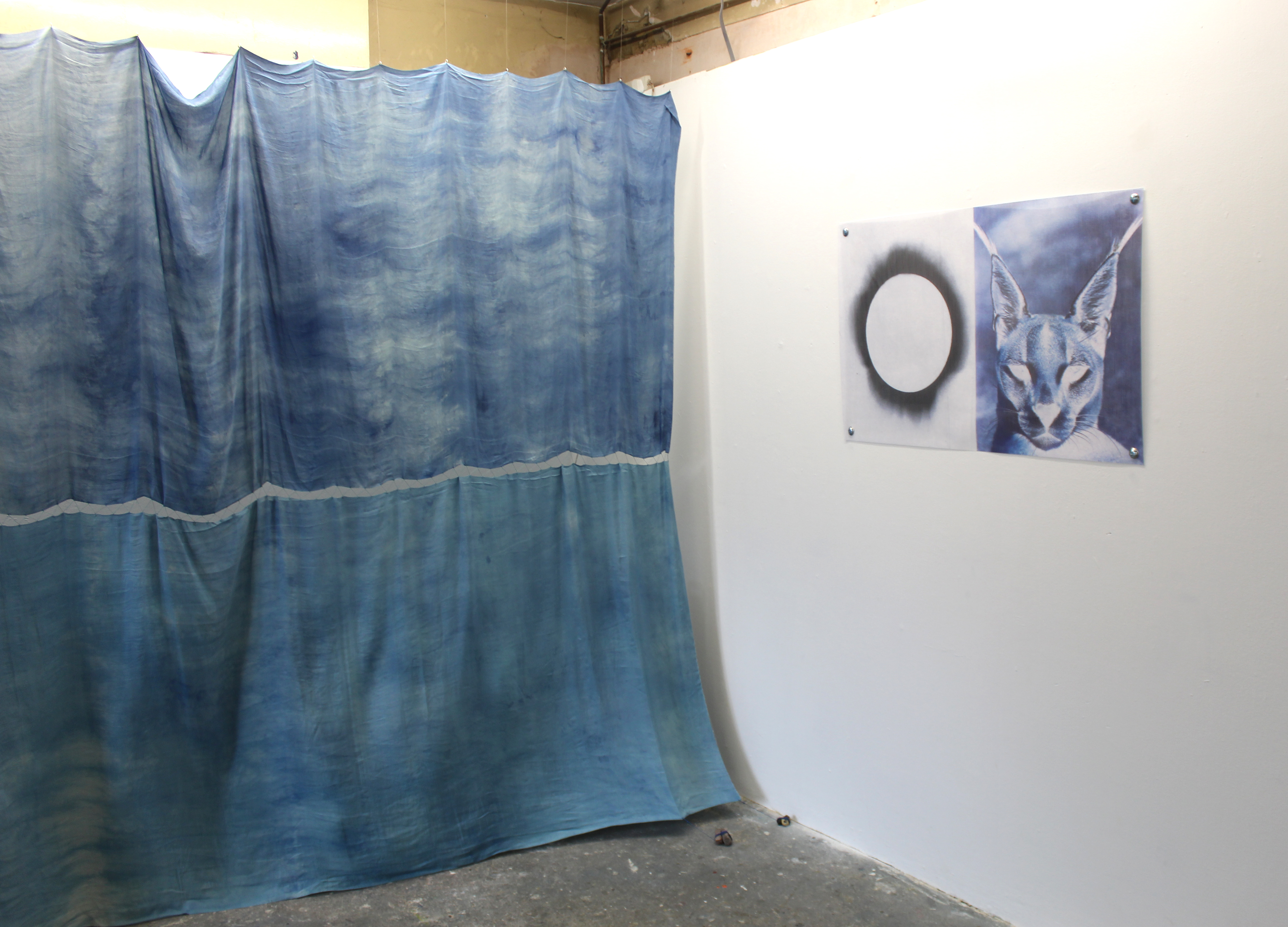






Silver-Tongued Seas
︎ Exhibition
︎ 16–31 October 2021
︎ Jupiter Woods, London
Artists: Maïa Nunes & Pádraig Spillane
Curators: Rosa Abbott & Iarlaith Ni Fheorais (Liquid)
Liquid is delighted to announce the exhibition Silver-Tongued Seas with Maïa Nunes and Pádraig Spillane at Jupiter Woods, 16–31 October 2021. This exhibition has been awarded funding by Culture Ireland.
Silver-Tongued Seas reflects on the sea as a site where diasporas and pharmaceuticals move across human and oceanic bodies, and the process of trauma and healing that occurs from that movement. Through sculpture, image, video and sound, both artists mine their personal histories and geographies, pinpointing sites of exchange and desire, featuring new work by Maïa Nunes, co-commissioned by VISUAL Carlow.
A publication featuring an essay by Roisin Agnew accompanies the exhibition.
︎ l-i-q-u-i-d.art



Woman in the Machine
︎ Exhibition, online platform & events
︎ 4 June – 12 September 2021
︎ VISUAL Carlow
Co-creators: VISUAL Carlow & Carlow Arts Festival
Exhibition Curator: Emma-Lucy O’Brien / VISUAL Carlow
Assistant Curator: Rosa Abbott
Inspired by the creativity of female pioneers working in sound, electronics and engineering the exhibition Woman in the Machine explores aspects of our current technological moment.
︎ womaninthemachine.com
 ︎ Massimo Alì Mohammad, still from Moana. Ocean. Sea. (2018)
︎ Massimo Alì Mohammad, still from Moana. Ocean. Sea. (2018)I Like to Watch
︎ Online Exhibition
︎ 26 November 2020 – 25 January 2021
Artists: Lina Bembe / Peter Berlin / Adham Faramawy / Umi Ishihara / Massimo Alì Mohammad / Annika Weertz / Youssef Youssef
Curator: Rosa Abbott
Online exhibition of short film and moving image works by artists, filmmakers and independent porn-makers using the camera to explore desire, voyeurism, pleasure, connection and intimacy in the digital age.
︎ l-i-q-u-i-d.art